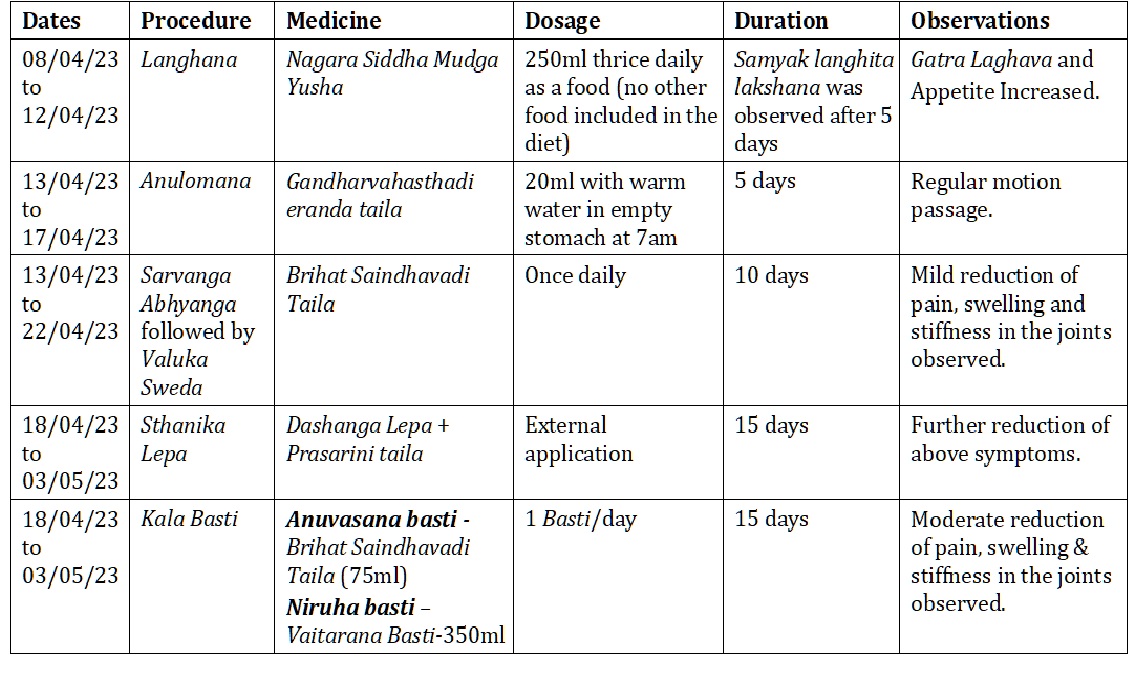An Insight into the Management of Amavata in Ayurveda
Abstract
Acharya Madhavakara first identified Amavata as a separate disease in the Madhavanidana. Amavata manifests due to the consumption of Nidanas i.e., Viruddha Ahara-chesta, Mandagni, Nischalatha and immediate Vyayama after consuming Snigdha Bhojana. These factors resulting in Mandagni, which is a primary cause of Ama formation. This morbid Ama then circulates throughout the body with the vitiated Vata dosha. Ama eventually accumulates in the Sleshma sthana, results in joint pain, stiffness and ultimately causes Amavata. Comparable to rheumatoid arthritis due to similar symptoms. Rheumatoid arthritis is a chronic inflammatory disease causing symmetric peripheral polyarthritis and joint damage. Affecting 0.8-1.0% of the Indian population, rheumatoid arthritis predominantly impacts females than males. A 23-year-old female patient was admitted with the chief complaint of pain in multiple joints for 5 years. This was associated with stiffness, swelling, loss of appetite, fatigue, hard stools and a feeling of heaviness in the body. Rheumatoid arthritis is managed by DMARDs and steroids but it has adverse effects of gastritis and peptic ulcer disease as well as renal function impairment. In Ayurveda details description of management of Amavata is mentioned. Considering the signs and symptoms, the patient was treated according to the treatment principles of Amavata. Langhana, Deepana-Pachana, Valuka Sweda, Anulomana, Vaitarana Basti were administered for 25 days and oral medications for 60 days. Before starting the treatment, grading was performed based on subjective and objective criteria. After treatment, the grade was reduced. Marked improvement was observed after the treatment, which also improved the quality of life.
Downloads

Copyright (c) 2024 International Journal of Ayurveda and Pharma Research

This work is licensed under a Creative Commons Attribution-NonCommercial-ShareAlike 4.0 International License.






